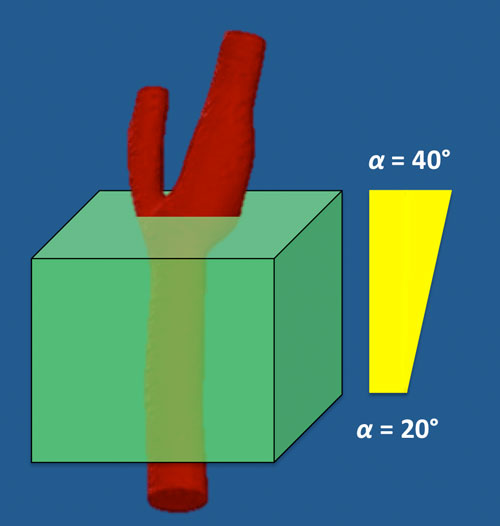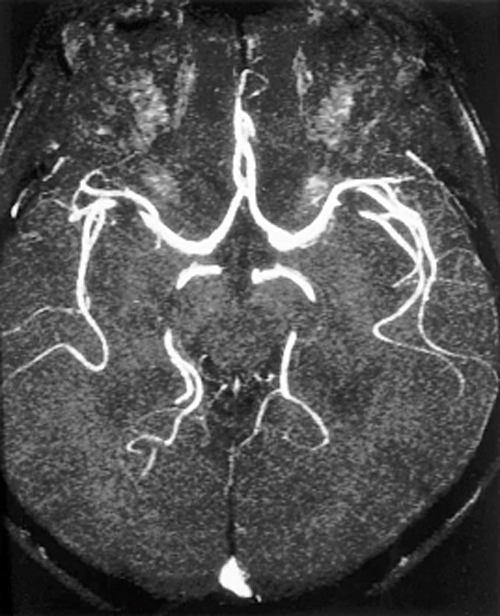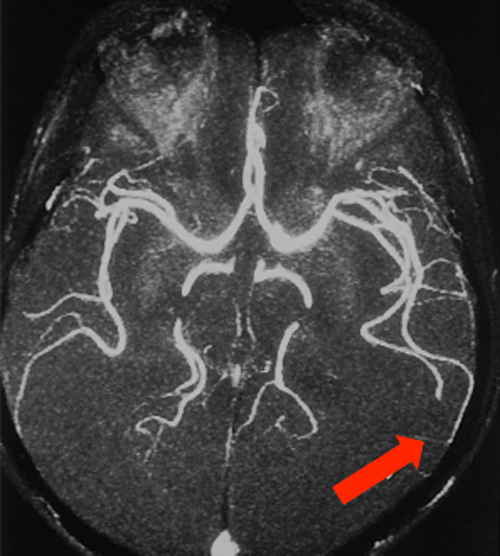|
In 3D time-of-flight (TOF) MR angiography slabs of tissue 5-10 cm thick are typically imaged. Flow-related enhancement is highest for vessels first entering the slab. The farther into the slab they travel, the more these vessels become saturated by repetitive RF-pulses. This results in progressive loss of MRA signal from vessels extending deep into the imaging volume.
|
|
The relative saturation between flowing blood and stationary tissue can be controlled by adjusting the RF-flip angle (α). In general, higher flip angles produce greater degrees of background saturation.
Normally an RF-pulse is designed to produce a constant flip angle across its entire volume of excitation. Ramped RF-pulses are a special class of asymmetric pulses with flip angles that vary as a function of position. In those most commonly used for MRA, the flip angle is made to increase linearly along the direction of flow. For example, the flip angle might be 20° at the entry slice, 30° at mid-slab, and 40° near the exiting slice.
|
Progressively higher flip angles in the deeper slices means that the stationary tissue there will become more saturated and further suppressed. Although intravascular enhancement still diminishes as the vessel travels deeper into the slab, its relative contrast compared to background tissue will be increased and the vessel will be more conspicuous. As a rough approximation, the use of ramped pulses allows slabs to be at least 1.5−2.0x thicker than they would otherwise be without such pulses.
Both Siemens and Philips refer to this method as TONE ("Tilt-Optimized Nonsaturated Excitation"). GE uses the generic term ramped excitation. Hitachi calls their technique SSP ("Sloped Slab Profile"), while Canon calls theirs ISCE ("Inclined Slab for Contrast Enhancement")
Advanced Discussion (show/hide)»
No supplementary material yet. Check back soon.
References
Atkinson D, Brant-Zawadski M, Gillan G, et al. Improved magnetic resonance angiography: magnetization transfer suppression with variable flip angle excitation and increased resolution. Radiology 1994;190:890-894.
Atkinson D, Brant-Zawadski M, Gillan G, et al. Improved magnetic resonance angiography: magnetization transfer suppression with variable flip angle excitation and increased resolution. Radiology 1994;190:890-894.
Related Questions
How does time-of-flight MRA work?
How does time-of-flight MRA work?




